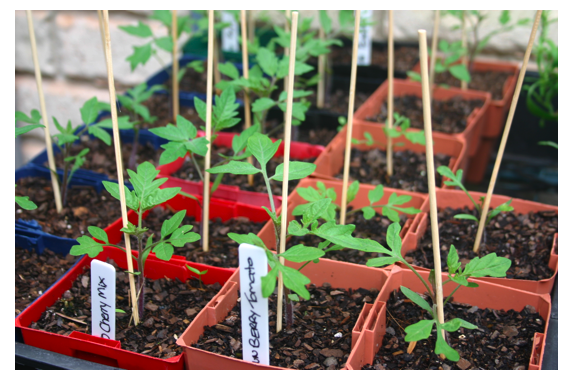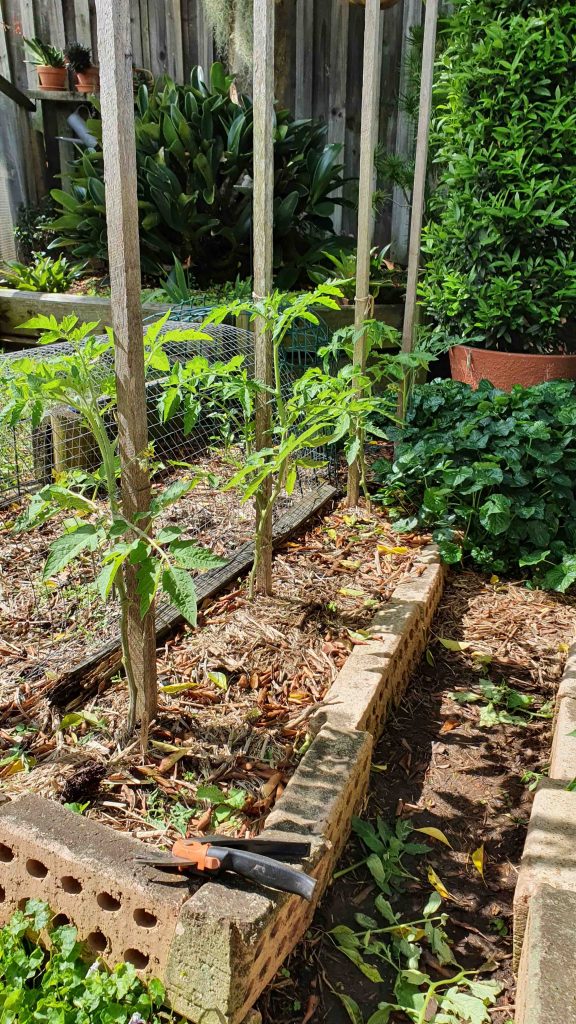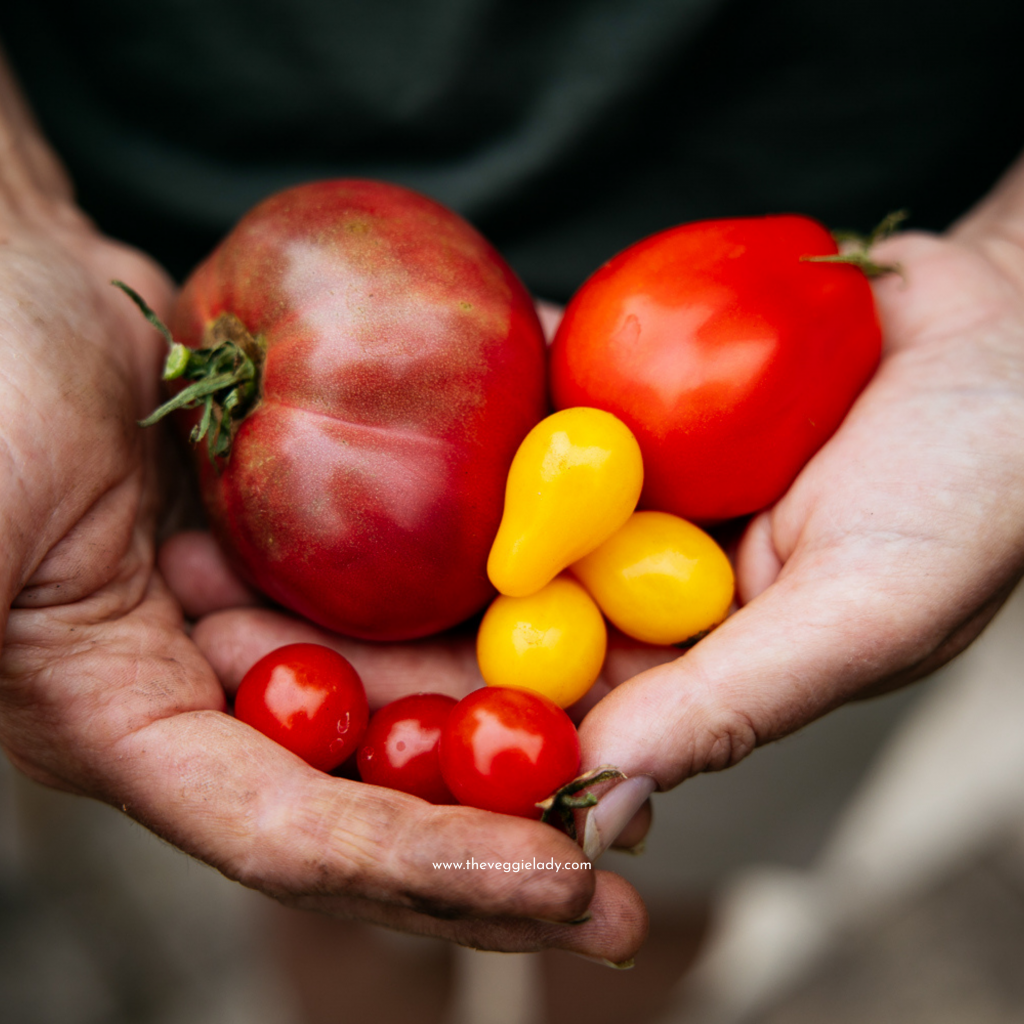Growing backyard tomatoes is one of the most rewarding things for the home gardener. The flavour just can’t be compared with any that you’ve bought at the shops. So much so, that you’ll never turn back to buying tomatoes again.
Choose heirloom seeds
Growing your own tomatoes also gives you choice. There’s only a limited variety at the shops to choose from but so much more available if you sow from seed. You can buy heirloom seeds from reliable organic seed suppliers, seed savers co-ops or online stores. Choose your next season’s tomatoes in winter so you can get an early start to your tomato crop. You’ll want to keep seeds under glass or germinate them inside before the ground is warm enough to plant them out.

Staking
Once tomato plants are big enough and your risk of frost has passed, it’s time to plant them out in the garden or containers. It’s important to remember to stake your plants at the same time as planting, then you won’t damage any delicate roots and the growing stems can be properly supported.
Determinate vs indeterminate varieties
There are two types of tomatoes: bush or staking varieties, or sometimes known as determinate or indeterminate. Each is staked differently.
Bush varieties (or determinate) are smaller, more compact plants and tend to produce their flowers (and subsequent fruit) all at once. These are your typical Roma tomatoes. These ones are great for containers because of their smaller size. They’re also easily supported within a cylindrical cage.
Staking varieties (or indeterminate) are the ones we see most and they will keep growing as long as conditions are right, with some reaching over 8 feet high. Flowers and fruit are produced on trusses at intervals all the way along the stems. These varieties need heavy staking and pruning to keep them under control. Commercial growers will choose one or 2 main “leader” stems and tie them to a tall stake.

Pruning tomato plants
Pruning tomatoes is a much debated topic and some gardeners swear by it, while others choose to let their tomatoes do their own thing. I keep mine semi-pruned, somewhere between the extreme pruning of commercial growers and the free-for-all of permaculture purists. Here’s my steps:
STEP 1. Look for the first flowers on the main stem of the plant and keep this stem as the first leader.
STEP 2. Select the strong lateral shoot just below the first flowers and keep this as your second leader.
STEP 3. Remove everything else below these 2 leaders. Also remove any low hanging leaves to keep the base clear, allowing good air flow around the plants.
STEP 4. Now the choice is yours:
* keep the plant bushy and allow a few side shoots to develop from the 2 main leaders or
* remove all side shoots and just keep the 2 leaders to reduce the overall size of the plant
Watch the following video as I show you the steps to keeping them tidy and free from disease.







 Twitter
Twitter Facebook
Facebook